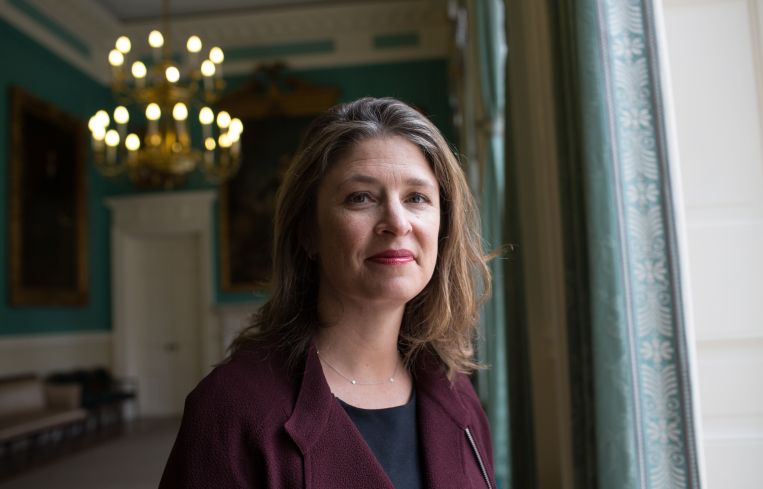Deputy Mayor Alicia Glen’s Greatest Hits
By Rebecca Baird-Remba January 9, 2019 9:00 am
reprints
Alicia Glen, Mayor Bill de Blasio’s no-nonsense deputy mayor for housing and economic development, has been sharply criticized by progressive activists and largely welcomed by the real estate industry, who viewed her as an effective liaison between their world and City Hall. She had her successes and her failures: the 52-year-old former head of Goldman Sachs’ Urban Investment Group was responsible both for setting the city on the road to building and rehabilitating 300,000 affordable apartments—one of the mayor’s major affordable housing goals—and for failing to fix the derelict conditions in many of New York City’s 176,000 public housing units. As she prepares to step down in late 2019, we thought we’d consider her biggest accomplishments in the five years she has served under Mayor Tall.
The Big Tech Explosion. Glen’s greatest coup as a de Blasio official has been bringing Amazon to Long Island City, Queens. The e-retailer hopes to build a $2.5 billion, 4-million-square-foot campus on an industrial site along the East River waterfront. In exchange, the mayor and the governor offered it $2.5 billion in tax incentives and grants, in what may be the largest economic development deal ever struck in New York State. She also helped oversee a major New York City expansion for Google. The search juggernaut recently announced plans to develop a new 1.7-million-square-foot campus for its sales team in Hudson Square. It also leased an additional 70,000 square feet of offices at Pier 57 earlier this year, after signing on to 250,000 space there in 2015.
Everybody Got Zoned. New York City’s zoning code got two significant upgrades during Glen’s tenure, both of which were designed to advance de Blasio’s ambitious affordable housing policy. In March 2016, the City Council signed off on a new rule that requires any developer who builds on rezoned land to set aside at least a quarter of his units as below-market. Local activists took shots at the policy, known as Mandatory Inclusionary Housing (MIH), because it wouldn’t force developers to build apartments for New Yorkers earning less than 40 percent of the Area Median Income ($31,000 for a family of three). However, MIH also made New York City the second major U.S. metropolis, after San Francisco, to create a citywide mandate for developers to build affordable units. Another policy passed in June 2016 called Zoning for Quality and Affordability, or ZQA, attempted to modernize parts of the city’s outdated zoning code. The policy allowed slightly taller buildings in some neighborhoods, in order to pave the way for more apartments and better ground-floor retail. It also eliminated parking requirements for new affordable developments constructed within a mile of subway stops.
Glen also oversaw two commercial rezonings: Midtown East and the Garment District. Thanks to denser zoning and a new air-rights purchasing system in Midtown East, J.P. Morgan Chase is demolishing its 1960s headquarters at 270 Park Avenue to build an even taller, more up-to-date office tower in its place. In the Garment District—which was rezoned just last month by the City Council—landlords can now renovate office buildings that had long been forced to remain outdated, because they no longer have to abide by a 1980s city rule that mandated the preservation of manufacturing space in commercial buildings.
She Saved Citibike. What Did You Ever Do? Finally, Glen was integral in developing two of de Blasio’s signature transit programs: bike share and ferries. She helped rescue Citibike, New York’s bike-share program, from bankruptcy in 2014 by negotiating a $42 million loan from Goldman Sachs. And now it might be too successful: ride-share company Lyft acquired Motivate, the Citibike operator, for an estimated $250 million last July. Lyft also promised to invest $100 million to triple the number the number of bikes on the road over the next five years, to 40,000 from 12,000.
Plus, Glen helped launch a subsidized citywide ferry service in 2017 that costs $2.75 per ride, the same as a subway fare. The system currently has six lines, connecting Rockaway, Astoria and Long Island City, Queens; the South Bronx and southern Brooklyn to various areas in Manhattan. Although transit advocates often consider the ferry system an expensive boondoggle, the city argues that it served 3.7 million riders its first year of operation in 2017. The initial cost, however, was steep: the city has spent $390 million to build docks and other ferry infrastructure throughout the five boroughs, according to The New York Times, and now plans to invest another $300 million to expand the service.


